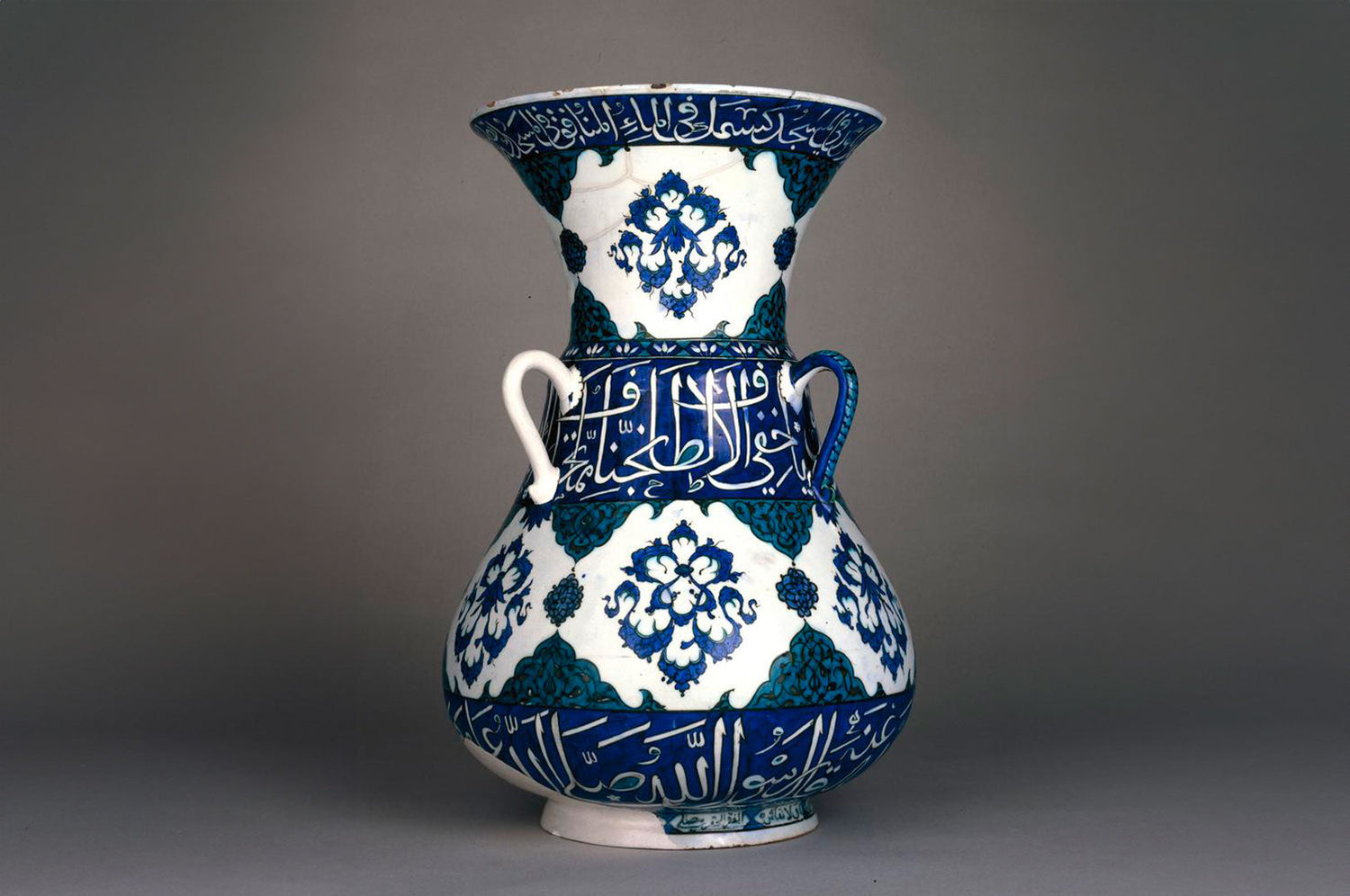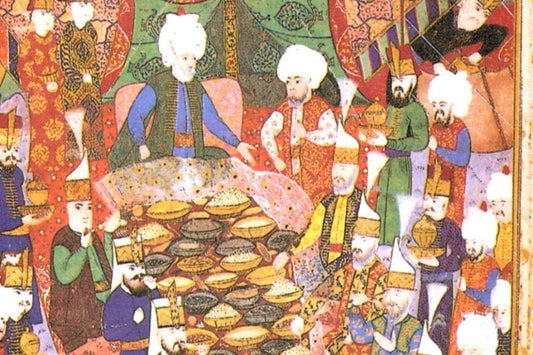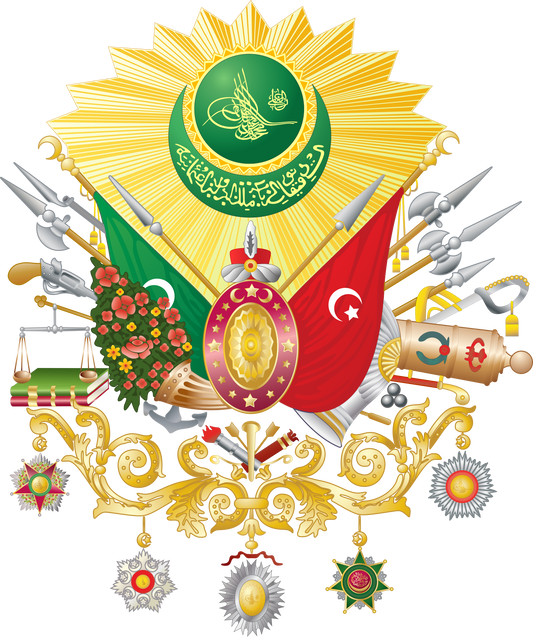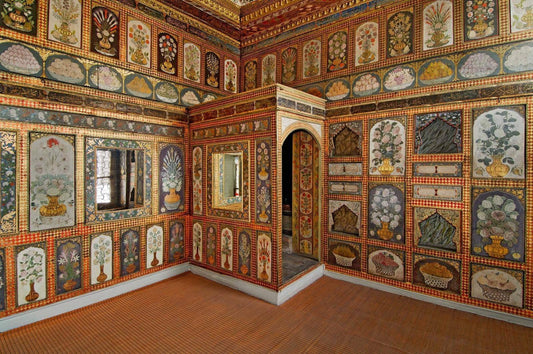In Chinese mythology, dragons are believed to create clouds with their breath, and these clouds are considered harbingers of good fortune. These mystical stories have inspired Ottoman art over time, finding their way into numerous works, from the Tiled Pavilion to Iznik tiles. In this article, we will examine the historical journey of the Chinese cloud motif and its place in art.
The Origin of Stylized Cloud Motifs in Chinese Art
The origins of the stylized cloud motif date back to Chinese art. In Chinese culture, where agriculture is vital, clouds, which bring abundant rains that ensure crop growth and prevent famine, also represent good fortune and bring good news. In Chinese mythology, dragons are believed to be able to create clouds with their breath or to summon rain by blowing wind. Unlike European cultures, in China, the dragon is not a flame-breathing creature, but rather a symbol of abundance and fortune seen among the clouds. The shape of the clouds resembles the dragon's sinuous body. Many gods and goddesses are depicted traveling between heaven and earth on clouds that appear like a magic carpet.
The Introduction of Cloud Motifs to Ottoman Art
The cloud motif, unparalleled in Anatolian Seljuk art, entered Ottoman art via Iran in the last quarter of the 15th century. Cloud bands are common in Timurid and Akkoyunlu Turkmen art. Various cloud motifs, seen in miniatures of the Herat and Shiraz schools, as well as in ceramics, metalwork, and carpets, were also adopted into Ottoman art. The first applications of Chinese clouds are found in the gilded patterns of the dark blue-glazed triangular tiles placed between the hexagonal tiles covering the interior walls of the Tiled Kiosk, built by Mehmed the Conqueror in 1473. The styles laid during Mehmed the Conqueror's reign further developed during the reign of Bayezid II, reaching their most perfect forms in the works of Sheikh Hamdullah in calligraphy and Baba Nakkaş in illumination. Chinese clouds are seen in the decorations at the beginning of the sura of the 1494 Quran (TİEM 402), which is thought to have been copied by Sheikh Hamdullah and whose illuminations were made in the palace atelier.
Cloud Motifs in Iznik Tiles and Ceramics
The most spectacular clouds appear in İznik tiles and ceramics. Different from the clouds in the sky, these stylized, dragon-like, S-shaped, entwined or striped clouds create diverse arrangements, either alone or in combination with other motifs. On the blue-and-white ceramics in the Baba Nakkaş style, dating from 1510 to 1515, the S-shaped clouds are not randomly drawn; they are generally structurally related to a central or symmetrical composition. Similar cloud motifs are combined with various knots from the "knot master" group on ceramic mosque lamps dating from the early 16th century, built in mosques and tombs commissioned by members of the dynasty. In a period when turquoise was first added to the color scheme and later progressed towards multicolor, S-shaped or differently colored clouds, extending in two opposite directions from the central link, consisting of a rosette flower or a small cloud, broke the monotony of the design and added richness.
Different Cloud Motifs and Usage Areas
Another characteristic of the cloud motif is its ability to fill spaces. As seen on a lamp dated 1549 (British Museum, 87.5-16.1), the elegant clouds, the finest examples of which appear on Iznik ceramics made by Musli, who introduced himself as a miniaturist, and the artists in his circle, are small, independent motifs that fill in the interiors of sunbursts or larger motifs in book bindings. In addition to the intricate patterns created by the interweaving of clouds, compositions were also created in which they were combined with vegetal motifs such as hatayi, flowers, dagger-shaped leaves, and curving branches. In the second half of the 16th century, the cloud motif became widespread, finding its place in everything from the borders of medallion- or Lotto-style Uşak carpets to willow shields and tombak military equipment, from fabrics and embroidery to jewelry.
Another cloud motif is the stacked and fragmented clouds whose soft curves are emphasized by fine lines, resembling clouds in the sky. The clouds in the celestial realm in miniatures depicting the Prophet Muhammad's ascension are of this type. Sometimes they taper at the ends, as if blown by the wind. In Iznik ceramics dating to the last quarter of the 16th century, they are used as sliding axes within the arrangement covering the ground. Some researchers have considered the cloud motif to be a stylized dragon. Whether derived from a mythical creature or inspired by actual clouds in the sky, the Chinese cloud is an indispensable motif in classical Ottoman art.
Chinese Cloud Motif Products
For products featuring the Chinese cloud motif, you can check out the links below:
- Baba Nakkaş Designed Vase
- Golden Horn and Chinese Cloud Patterned Ceramic Plate
- Phoenix Design Footed Bowl
The Enduring Influence of the Chinese Cloud Motif in Art
The profound influence of the Chinese cloud motif in art and culture reflects both the mystical elements of Chinese mythology and the rich aesthetics of Ottoman art. In addition to being a symbol of agriculture and fertility, this motif has also found a significant place in diverse geographies and artistic disciplines over time. These stylized clouds, frequently seen in Ottoman art, particularly in Iznik tiles and ceramics, are not merely decorative elements but also bearers of a historical legacy. Chinese clouds, the artistic reflection of dragon mythology, are a concrete example of cultural interactions and artistic innovations. This unique motif remains an indispensable part of classical Ottoman art and remains valuable today.




